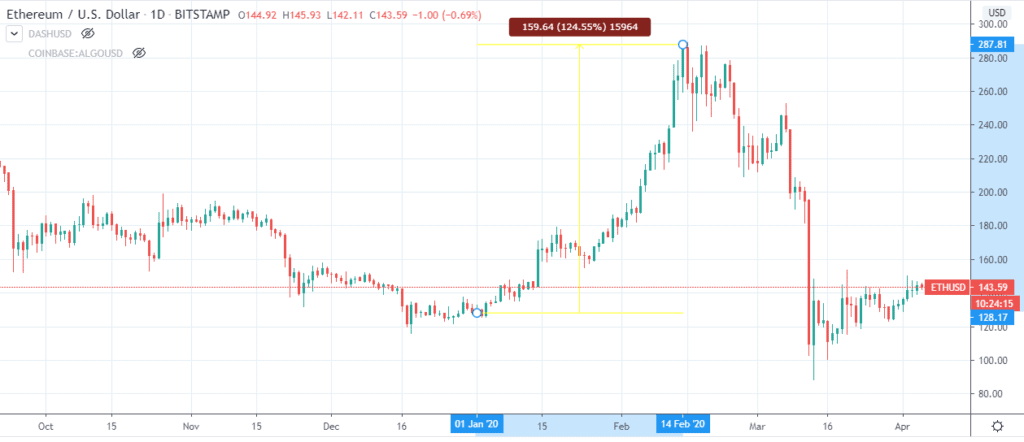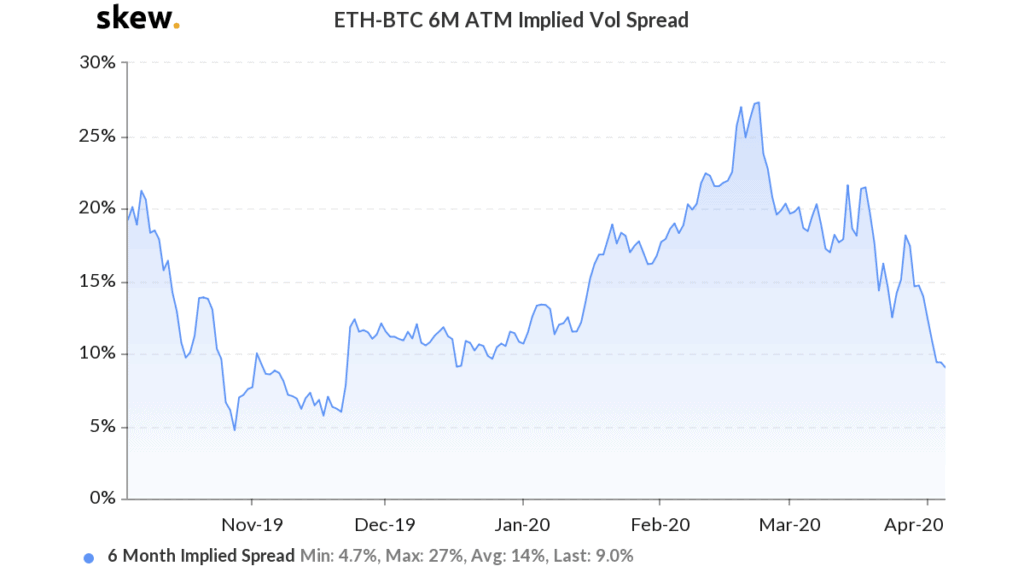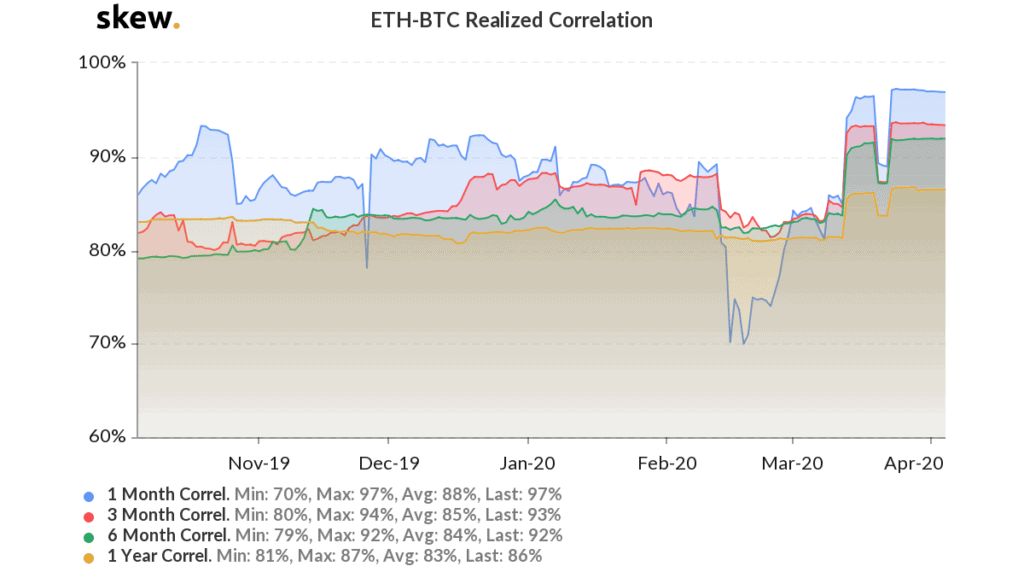At the start of 2020, Ethereum was one of the best performing digital assets in the industry.

Between January 1st to February 14th, Ethereum registered a growth of 124.55 percent as its price hiked from a lowly range of $128, all the way up to $287. Since then, it has been all downhill for the largest altcoin.
After the market crash on 13th, ETH suffered one of the worst pullbacks in the industry and concluded Q1 at a low valuation under $135.
During its initial spike, Ethereum increasingly de-coupled away from Bitcoin as its correlation index dropped significantly and it continued to shed away from Bitcoin’s impact.
Now, the tables had completely turned, as according to Skew analytics, Ethereum-Bitcoin implied volatility spread over for a 6-month period was incurring its lowest level for 2020.
Implied volatility is the expectation of the BTC market on how volatile the asset is going to be over a specific period of time.

According to the above chart, the ETH-BTC 6-month Implied Volatility Spread was down to 9 percent on 5th April after registering a high of 27 percent on the 23rd of February.
The continued compression of the implied volatility spread indicated that Ethereum’s valuation was more tied to Bitcoin than ever in 2020. However, the current turmoil in the mainstream financial market could be due to the economic fallout from the COVID-19 spread.
However, in spite of the global economic crisis, over the past week, the prices of digital assets have more than stabilized at a specific range hence a relative drop in the correlation between Ethereum and Bitcoin should have been achieved in the charts.
A decrease in implied volatility does not indicate any further direction in the charts in terms of a bullish or bearish trend, but it does improve the probability of sideways movement in the current price range.

The realized correlation index between Bitcoin and Ethereu also pictured a similar trend however the correlation was observed to be at its highest levels in 2020, on all time periods.
The correlation index between ETH-BTC was above 90 percent on 1-month, 3-month, and 6-month time length, which suggested that the early year un-correlation between the assets had completely diminished at press time.
Lukk Strijers, Chief Operating Officer at Deribit recently stated that the increase in investor’s interest in Ethereum back in February was due to the rise in Ether-Bitcoin implied volatility spread. Potential investors identified this as an opportunity to move ahead with the market with Ethereum, which continued to be the 2nd largest asset in the industry.
However, with the current market scenario, it looks increasingly difficult for Ethereum to move away from Bitcoin’s dictation, as the largest asset continues to call the shots for the token fiddling in the second place.

